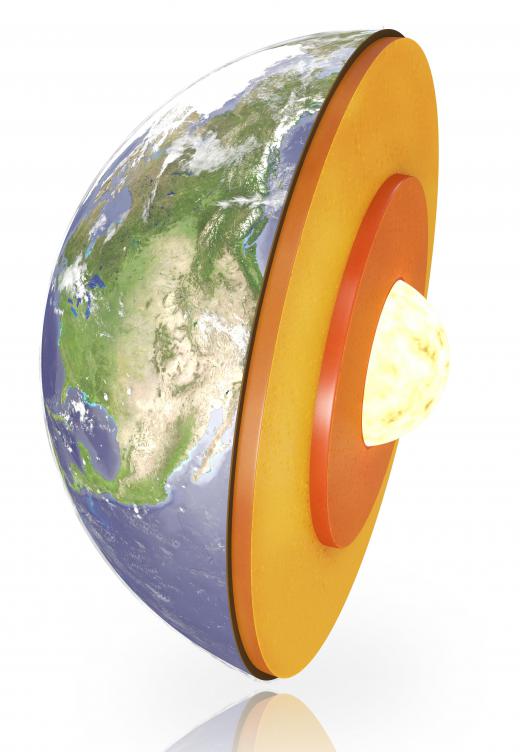What is the Earth's Mantle?
 Michael Anissimov
Michael Anissimov
The Earth's mantle is a roughly 1,800 mile (2,900 km) thick shell of compressed and heated rock, beginning below the Earth's crust (lithosphere), which extends 3.1 miles (5 km) below the ocean floor and 19 to 31 miles (30 to 50 km) below the continents. It makes up 70% of Earth's volume, in comparison to the Earth's crust, which makes up less than 1% of the total. In fact, the crust is just a thin layer of frozen rock shielding the mantle from outer space. The two layers are separated by a transition area called the Mohorovičić discontinuity (the "Moho") where a certain type of seismic wave quickly speeds up when transiting through.
Like the crust, the mantle is largely composed of oxide compounds such as olivine, pyroxenes, spinel, garnet, peridotite, and eclogite. This layer differs in its chemical ratios from the crust, however. It is composed of roughly 45% oxygen, 23% magnesium, 22% silicon, 6% iron, 2% aluminum, 2% calcium, with trace amounts of sodium, potassium, and other elements. Like the crust, the mantle can broadly be regarded as silicate. Below it are the outer core and inner core of the Earth, making up about 29% of the Earth's volume, and composed primarily of molten (outer core) or solid (inner core) iron and nickel.

The upper mantle (aesthenosphere) has a low density relative to the rest of this layer, and flows fluidly, like a plastic. Conditions gets hotter and denser as it goes down, until the rock melts entirely where the lower portion ends and the inner core begins. Convection in the upper mantle causes continental drift. The main driver of this convection is the overlying lithosphere sinking back into the mantle through subduction zones of the edges of the oceans. By subducting crust through the ocean's edges and regenerating it in divergent boundary areas (where plates move apart) such as the Mid-Atlantic Ridge, the entire oceanic crust is recycled every 100 million years or so. By comparison, portions of the continental crust are billions of years old.
AS FEATURED ON:
AS FEATURED ON:













Discussion Comments
Under the mantle is the outer core.
When the mantle is described as fluid as plastic I have a hard time understanding this concept. Perhaps like a thick pudding would be more suitable?
One thing that wasn't mentioned in the article is the extreme temperatures that exist at these depths into the Earth. Sure, there is the assumption that melted rock would be hot but one website I looked at said the average temperature inside the Earth's mantle is 5400 degrees Fahrenheit. Can you imagine?
In the last part of the article, the author mentions that the oceanic crust is recycled by the inducting and subducting effects of the mantle every 100 years. This is a amazing to me to think that there are parts of the ocean that are relatively young compared to some of our billion year old mountain ranges on land.
They say that great mystery lies beneath the ocean surface but really we have older and more obscure mysteries right here on land.
Cave spelunking just got a lot more interesting.
Post your comments